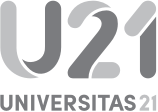The MRD is a highly flexible X-ray diffraction system, equipped with X-ray mirror, (220) Ge monochromator, X-ray lens, mono-capillary, triple-axis goniometer, and is used for analysis of thin films, nanostructure, semiconductor materials, stresses and textures. It is equipped with a few active components, such as an X-ray mirror, Ge 220 monochromator, X-ray lens and mono-capillary for incident beam conditioning, and parallel plate collimator or triple-axis for diffracted beam conditioning. Both proportional and area detectors are available.
The MPD can be configured for phase identification for thin film, analysis of stresses and textures, rocking curve analysis, reciprocal space mapping and X-ray reflectivity and is heavily used for research on thin films and nanomaterials. Polycrystalline phases within a film of 20 nanometres can be precisely identified using grazing angle diffraction. The MRD is also equipped with a vacuum stage and can safely test 8 inch wafer samples. The sample must be a bulk solid, no thicker than 9 mm (for the standard sample stage) or 4 mm (for the vacuum stage).
The MRD runs in five different modes:
- MRD Setting 1 - high resolution module with the X-ray mirror + Ge (220) monochromator, used for rocking curve, reciprocal space mapping.
- MRD Setting 2 - medium resolution module with the X-ray mirror and collimator, used for thin film analysis and phase identification.
- MRD Setting 3 - low resolution module with the Cu tube, X-ray lens and collimator, used for analysis of textures and stresses and phase identification.
- MRD Setting 4 - low resolution module with the Co tube, X-ray lens and collimator, used for analysis of textures and stresses and phase identification.
- MRD Setting 5 - medium resolution transmission module with X-ray mirror and collimator; used for phase identification of tiny powder sample (less than 0.5 g) and specific XRD transmission measurement.
The MRD is normally configured at Setting 2. Other modes are available on request before the booking and you should allow around 30 minutes for configuration of the hardware and software. Operation on Setting 5 can only be performed by a qualified member of staff.






